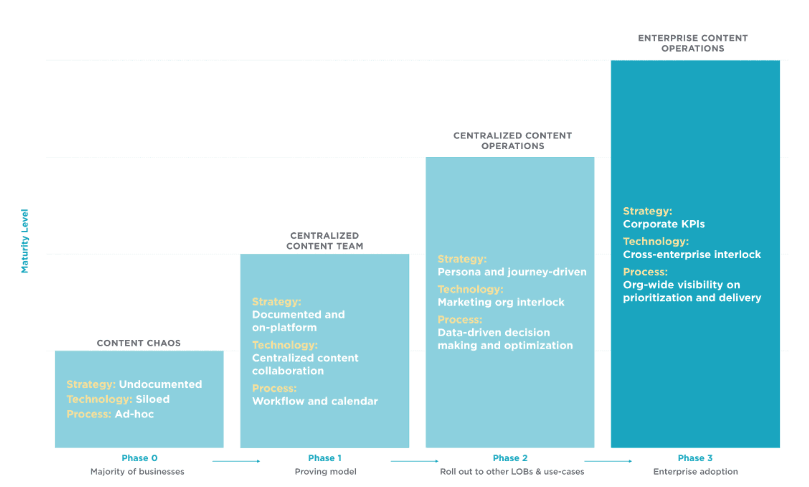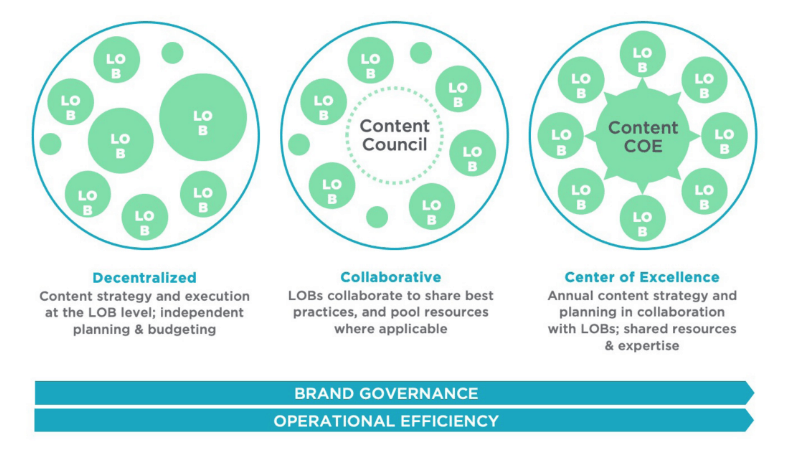ROI
How to Grow Your Content Marketing Program
Aesop wasn’t a marketer. He died in 564 BCE, well before anyone started caring about digital transformation or virtual reality. But given that he became famous for telling stories full of advice and life lessons, the Greek philosopher was something of an early thought leader.
The takeaways from Aesop’s fables are just as relevant today as they were thousands of years ago—things are not always what they seem, appearances can be deceiving, slow and steady wins the race. Most of his lessons concern life in general, but some apply neatly to business and marketing. If you’ll humor me, I’d like to focus on one fable in particular, called The Boy and the Filberts.
In the story, a boy sticks his hand in a pitcher to grab some filberts. He scoops as many as he can into his fist. But when he tries to get them out, his hand gets stuck. He refuses to let go of any filberts or find a compromise until he gets frustrated and begins to cry.
I know what you’re thinking. What the hell is a filbert? It sounds like an off-brand Dilbert that Xerox created in the ’90s to connect with Gen X. (It’s actually an antiquated term for hazelnuts.) But weird names aside, this fable has a lot to do with what’s to come in this playbook. Marketers care about growth. They want bigger budgets, more content, another hire, better results. Standing still isn’t part of their job descriptions, and patience isn’t always easy—especially when your CFO is holding your budget hostage.
The moral here: Do not attempt too much at once.
Growing your content marketing program across the org is just as much about efficiency as it is about expansion. Producing more content without clear goals or objectives isn’t an accomplishment. If anything, it’ll give executives a reason to doubt your entire content program.
As Caroline Paxton, senior director of social media, content & strategic initiatives for RBC, told us, “Quality and quantity are equally important.”
A growth mindset
Most marketing tasks start with “how” questions. How do I create a content strategy? How should I staff my team? How do I know what my audience wants? When thinking about growth, though, it’s best to start with a simpler question: What is scale?
Once you’ve established a content program that drives brand awareness and lead generation for one area, scale is how you expand that model to other departments or lines of business. It’s the way you can replicate success without starting from scratch.
When you should scale depends on so many factors, like company size, content budget, team size, internal skills, and content maturity. In the first playbook in this series, we shared our Content Marketing Maturity Model to show what different phases of success look like:

The first playbook explained how to get out of content chaos by using a documented strategy, competitive analysis, and a content calendar. But as the Maturity Model illustrates, there’s still plenty of room to grow once the chaos disappears. To take another leap forward, marketers have to balance what worked in the past with a new set of priorities. As more people get involved, you’ll need to incorporate their objectives, goals, and expertise.
Scale is a business buzzword that gets tossed around all the time. But like most trendy topics, there’s a meaningful concept buried beneath the hype and bluster. There are a few meaningful ways to scale. You can expand content to a new line of business or a new department within an existing line of business. Expanding to a new LOB, for instance, could mean a team in another city or country. Growing within the same LOB could mean teams that handle different parts of the funnel get involved. So if your team handles top-funnel content on a blog, maybe the group responsible for sales enablement content gets involved.
Based on what we’ve seen from the industry over the last decade, we mapped out the three common operating models that successful companies use to grow:

As you’re going through the rest of this playbook, keep this in mind: One model is not necessarily better than the others.
Look at it this way: a fintech startup with 50 employees should have a different mindset than a Fortune 500 bank that has 25,000 employees spread across 40 countries. We’ve seen clients thrive with all three models. We’ve also seen brands grow on different timelines. The key is to scale based on the resources you have instead of comparing yourself to everyone else. Setting realistic expectations and scaling gradually will make it so much easier to align your content teams.
Take RBC, which is a huge company. It serves millions of customers, employs roughly 80,000 employees, and earns billions in revenue every year. However, when RBC first partnered with Contently in 2016, it made the smart decision to prove its content program on a small scale before ramping up to include other teams.
The personal and commercial banking division started first. Then, over time, other groups like wealth management and insurance joined. By 2018, RBC had 22 teams creating content on the Contently platform. It’s a prime example of what happens when a global company gets different lines of business to come together behind one cohesive voice.
“When we embarked on this journey … we needed to make sure there was going to a consistent flow of content,” Paxton said. “That was the first hurdle we focused on, ensuring that we had a machine that could create the quantity of content for our readers.”
Whether your company is large or small, you’ll eventually have to clear that hurdle. In the next section, let’s go over what you can do to scale your content program and align your teams.
This is an excerpt from The Content Marketer’s Playbook: Grow Your Content Program. Click here to read the entire e-book.
Get better at your job right now.
Read our monthly newsletter to master content marketing. It’s made for marketers, creators, and everyone in between.




